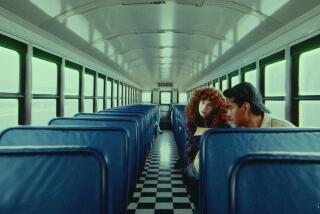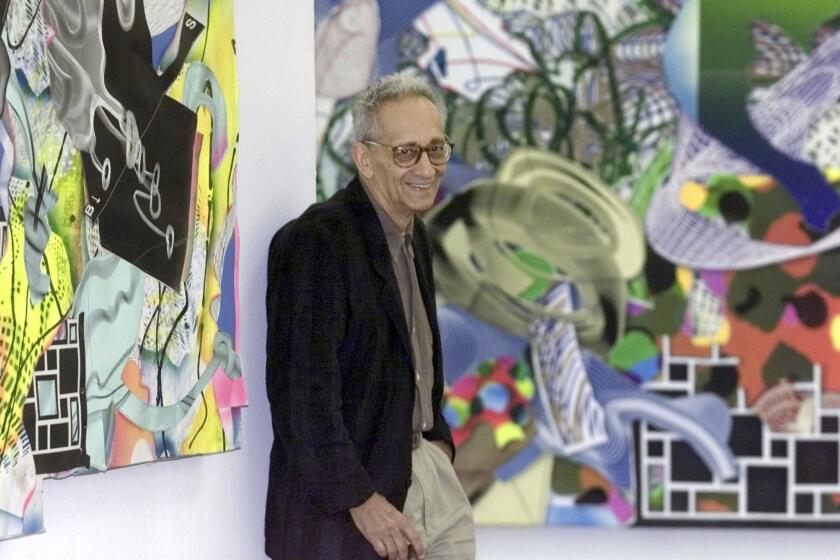A museum’s artful update
In 1976, a young college student who had just moved to Vienna to study art went to hear a lecture at the Albertina, a grand neoclassical palace in the city’s historical center that houses one of the world’s great collections of graphic art. Klaus Albrecht Schroder was stunned by the parade of Old Masters that he saw: Raphael, Michelangelo, Leonardo, Durer and Rembrandt.
“It was the first museum I visited in Vienna,” Schroder recalls. “I was fascinated by the immediacy and directness of the drawings.” Schroder became a specialist in modern art and the director of Vienna’s Leopold Museum, famous for its Egon Schiele paintings.
In 1999, Schroder took over the directorship of the Albertina, which had been closed for remodeling. Under Schroder, the minor revamping turned into a major renovation and expansion, which took almost a decade and cost more than $90 million. The museum reopened in March, although finishing touches are being applied.
“I was frightened that no one would come,” Schroder says. “No one knew the Albertina. You could ask someone standing 100 meters from the Albertina where it was and they couldn’t tell you.”
People seem to have found their way. In four months, 350,000 visitors have strolled through the gorgeously restored palace, the number the museum had projected for the entire year. Almost 30,000 people lined up in just one day to see the inaugural exhibit, a retrospective of Edvard Munch, far more than the number of visitors the museum saw on a good day before the remodeling.
The museum is bracing for even bigger crowds this month when it opens a major Albrecht Durer retrospective that promises to be one of the most spectacular shows in years.
“A fantastic, big, beautiful retrospective of the most important German painter ever,” Schroder enthuses.
Duke Albert would no doubt approve. Born in 1738, Albert, Duke of Saxe-Teschen, married into the royal Hapsburg family and spent 50 years passionately collecting art, amassing 14,000 drawings and 230,000 prints.
“It’s really surprising and astonishing how good his eye was -- and his money,” Schroder says. “He looked for the best and paid for it.” Albert kept his collection at his home, a mansion perched atop the remains of a fortress built after the Turkish siege of Vienna in 1529. One side of the building (now featuring a chic patio restaurant) looks over the Burggarten park; another faces a grand plaza and the State Opera House.
After the collapse of the monarchy in 1918, the Albertina became the property of the new Austrian republic, which combined the museum’s collections with the graphic arts holdings of the Imperial Court Library. Today this treasure trove has grown to about 45,000 drawings and watercolors and 900,000 prints. Twice, the collection was almost sold to American museums, in 1919 and 1936. Contracts were signed, but public outrage quashed both deals. “It was stopped at the last moment both times,” Schroder says. “We’re very happy we don’t have to go to Boston to see Durer’s ‘Praying Hands’ or Michelangelo’s nudes.”
In 1945, the Albertina was heavily damaged by Allied bombing, but the art was safely stashed in a salt mine. The building was fixed on the cheap. By the time Schroder arrived, most of the grand Hapsburg staterooms had been turned into office or storage space, and a state of general disrepair had descended upon the once-proud palace. Fewer than 20,000 people visited a year.
Schroder pitched an ambitious restoration plan to the Austrian government. While the original budget was $21.7 million, Schroder raised more than $92.4 million, most coming from the state, although private donors and the city of Vienna also contributed.
“The palace was never meant to be a museum,” he says. “The palace was misused. It was necessary to bring together the past and the future.”
Local architect and Pritzker Prize winner Hans Hollein designed a titanium entryway with elevator and escalator to add a postmodern flourish to the palace, where the regal staterooms have been restored to their Hapsburg splendor.
But the biggest changes took place underground: New exhibition halls expanded gallery space by 10 times, and state-of-the-art conservation and storage facilities brought the institution into the 21st century.
No more rummaging around dusty storerooms: an automated retrieval system can pull one of the almost 1 million prints in a minute.
“The Albertina is now Vienna’s most modern institution but also still very traditional,” Schroder says. “My aim was to reconstruct and renovate the old palace and to expand and build a new wing for our collection. The greater part of the expansion happened underground. We didn’t destroy the views. We’re very proud of that.”
Schroder is not a traditional Austrian museum director but more of a central European version of the Guggenheim’s Thomas Krens, an art world impresario who believes that museums need to market themselves as much as any other entertainment venue.
“Art wants to be seen,” Schroder says. “That’s what it was made for. Art should be seen by as many people as possible.” Schroder has also reinvented the profile of the museum.
Although Duke Albert sought out contemporary art from Fragonard and Goya, and the collection includes works from the likes of Pollock and Rauschenberg, Schroder added photography to the museum’s mandate. Spending about a million euros a year, the Albertina has amassed 65,000 prints in the last three years, buying in-depth work by such photographers as Robert Frank.
The new exhibition space means that the institution can host large shows year-round, such as the current Brassai retrospective, which was organized with the Pompidou Centre in Paris.
The inaugural Munch show, for example, was a declaration that the museum has a new identity.
“Everyone thinks of the Albertina and Durer,” Schroder says. “I wanted to start with classical modern art to brand us with a new image. Now, half a year later, I give the world what it wants: a Durer show.”
The Durer show, which opens Friday and runs through Nov. 30, brings together almost 200 drawings, watercolors and paintings -- the largest homage to the artist since the great Nuremberg retrospective celebrating Durer’s 500th birthday in 1971.
For many of the works on loan from museums in Paris, Berlin and London, it’s something of a homecoming: The Albertina’s first curator, Francois Lefevre, stole 150 Durer drawings that were later sold around Europe. The exhibit will also be a rare chance to see some of the Albertina’s own Durers, including “The Hare,” which was last shown in public 30 years ago, and “Praying Hands.”
One paradox of the Albertina is that its most famous works are too fragile to be kept on constant view, especially in the bright sunlight that fills the beautiful Hapsburg rooms. So the magnificent drawings that are on permanent display upstairs are actually state-of-the art facsimiles, following the museum’s long-time policy of showing high-quality copies instead of originals. The real works will make appearances only at special shows, such as the Durer, or when lent to other venues.
“A lot of people are disappointed,” Schroder admits. “But there’s no other option. You still get a glimpse of the width of our collection. People want to see the icons, but we have to preserve them for the next 500 years.”
Still, Schroder says, the reproductions are almost impossible to distinguish from the originals, even for a professional. A director from a major European museum recently spent half an hour looking over the Raphaels and Michelangelos hanging in the Albertina and gushed about how fantastic they were before Schroder announced that the drawings were facsimiles.
“He’s really a connoisseur,” Schroder says. “He couldn’t believe it.”
More to Read
The biggest entertainment stories
Get our big stories about Hollywood, film, television, music, arts, culture and more right in your inbox as soon as they publish.
You may occasionally receive promotional content from the Los Angeles Times.






